NatureNet Science Update
Forget the old saw about a picture being worth a thousand words; when it comes to effective conservation, especially in tropical forests, sound just might be worth an entire library – words, pictures and all.
Why? Because, as a new paper in Science by TNC scientists and partners explains, sound holds the potential to help fill one of the most vexing evidence gaps in conservation: How do we know – what’s the evidence? – that certification programs, zero deforestation commitments and similar interventions are actually achieving their goals when it comes to conserving animal biodiversity in tropical forests?
The need to close that evidence gap is the reason TNC scientists are experimenting with sound recording and analysis as described in “The sound of a tropical forest.” Because right now, the short, uncomfortable and honest answer is, we don’t always know if conservation interventions are actually working to protect animal biodiversity in tropical forests.
Recording Forest Soundscapes Can Help Monitor Animal Biodiversity for Conservation
Now. A lack of specific evidence does not mean such certification and zero deforestation strategies don’t work for biodiversity conservation.
What it does mean, says paper co-author Conservancy NatureNet Science Fellow at Princeton University Zuzana Burivalova, “is that there’s an evidence gap because scientists haven’t had an effective way to monitor for animal biodiversity [in tropical forests].That kind of monitoring is really expensive and difficult, especially over broad spatial and time scales, and that’s where we think bioacoustics – sound monitoring – could really help.”
Consider the challenges of continuously monitoring a tropical forest for biodiversity: by definition and design most of these areas are remote and difficult to access, scientists can only cover so much range, their time in the forest is limited, and the sheer volume of species that need monitoring – from mammals to birds to amphibians — is daunting. Nevermind the volume of insects. And what about species that are only active at night?
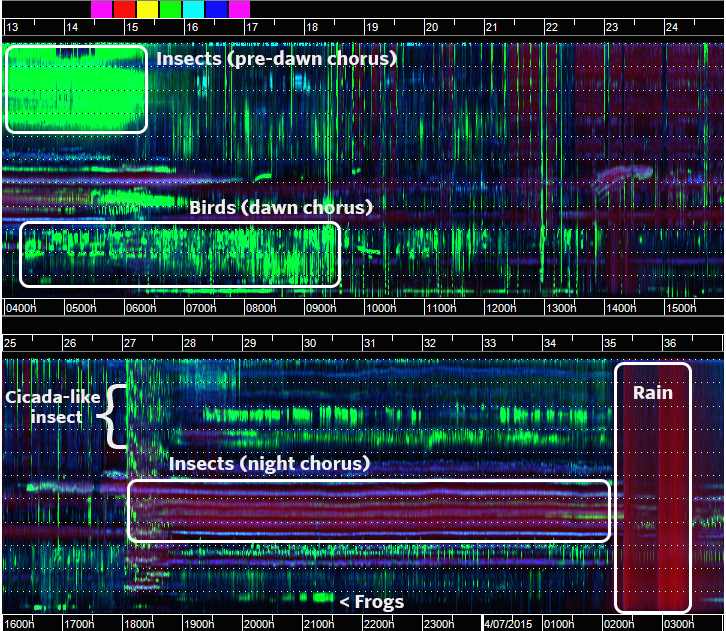
Currently because of that expense and difficulty, scientists and forest managers are forced to rely on imperfect proxies – like satellite imagery and camera traps – to measure the effectiveness of some of the world’s most popular tropical forest conservation strategies.
The most common proxy is satellite imagery. While such pictures are worth those proverbial thousand words for giving scientists and others (like auditors or consumers) important evidence about the forest cover in certified or protected forests, even the finest resolution imagery still tells them nothing about what’s going on beneath the canopy.
As paper co-author Rhett A. Butler, founder of the conservation news web site Mongabay, notes, “Companies are adopting zero deforestation commitments, but these policies do not always translate to protecting biodiversity due to hunting, habitat degradation, and sub-canopy fire. Bioacoustic monitoring shows great promise in helping address this issue in that it can be used to monitor across a wide range of taxa and detect changes resulting from relatively minor disturbances that satellites and camera traps may miss.”
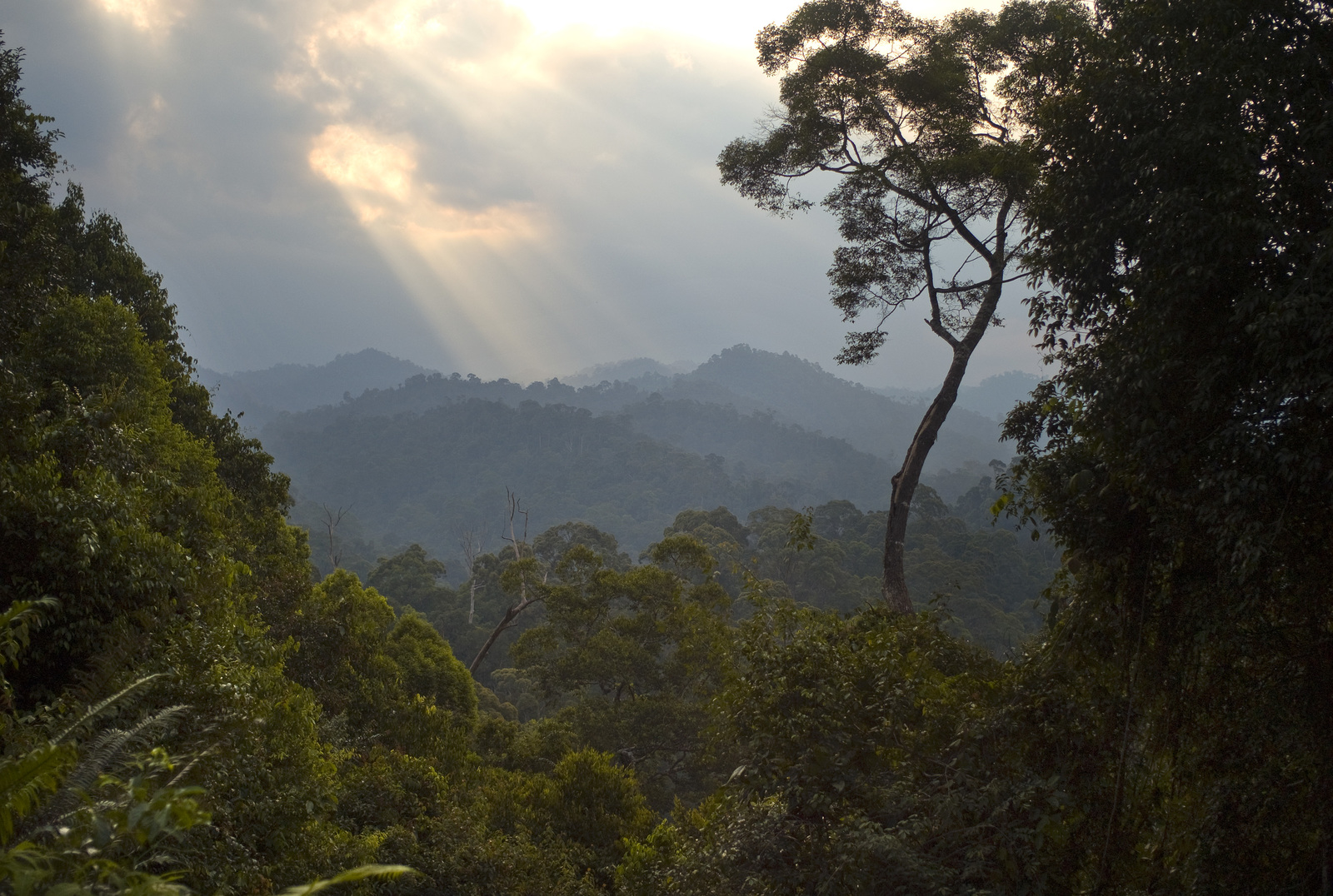
Empty Forest Syndrome
To be blunt, lack of deforestation does not mean there are any animals in the forest, a concept known to scientists as “empty forest syndrome.” Which is where sound – more specifically entire soundscapes – comes in.
The analysis of bioacoustic data – gathered using autonomous sound recording devices deployed in tropical forests – is opening a new frontier in field study for monitoring and measuring animal biodiversity across a wide range of taxa (different species).
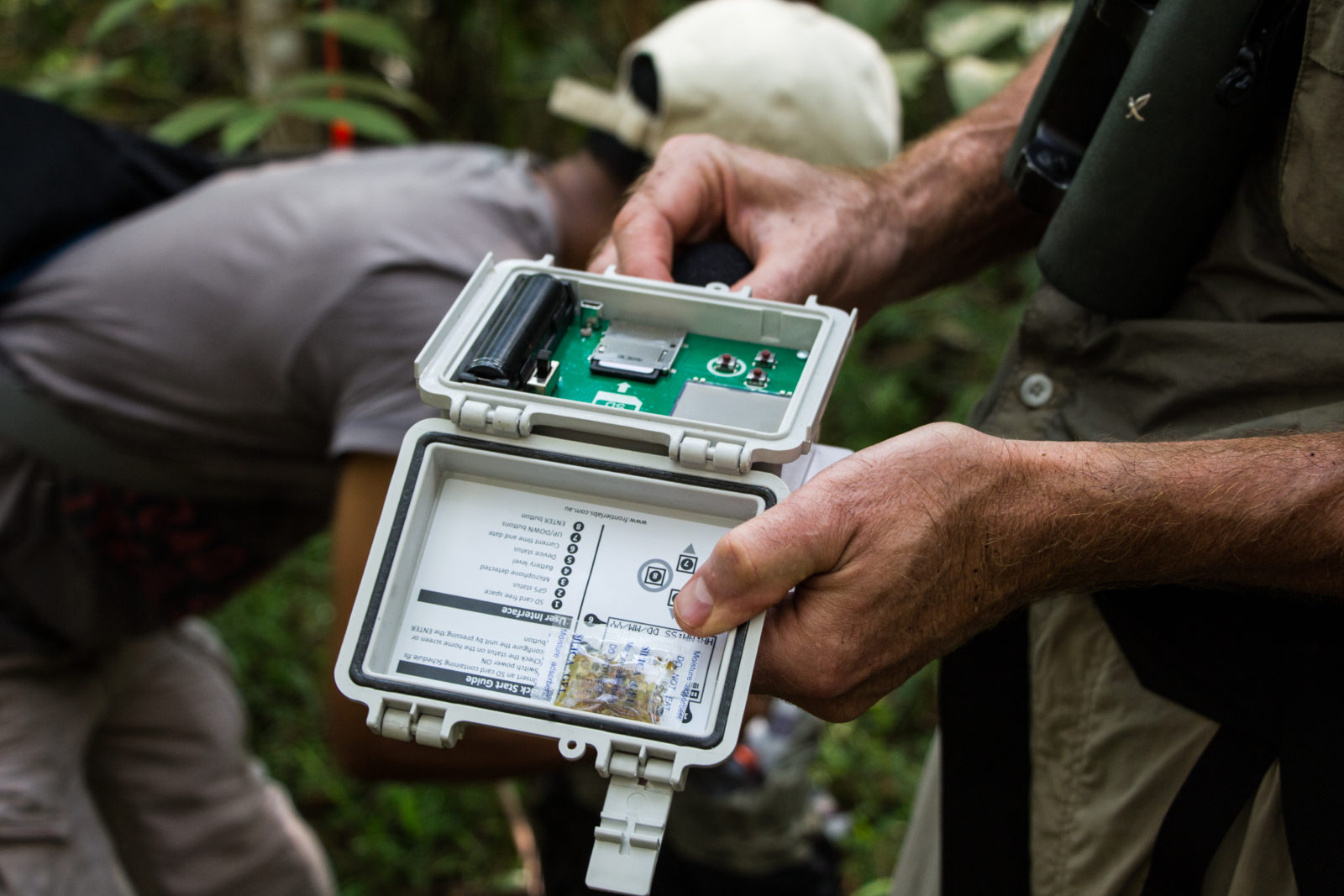
The recorders are small, inconspicuous (so small and inconspicuous they can be strapped to trees, no towers, tripods, or other installation necessary). They can be programmed to record continuously or at specific intervals. If there is solar power and network connectivity available, some recorders can upload data continuously to cloud storage.
Depending on the thickness and type of forest vegetation and the types of vocalizing species – mammals, birds, amphibians, insects – the recorders are sensitive enough to detect animal calls and songs across several hundred meters.
While scientists might not be able to see a family of gibbons or hornbills thriving in a certified forest on satellite imagery, with the help of an array of acoustic recorders, they could hear them. Or not hear them.
The thing about monitoring species with sound is that the absence of expected calls, vocalizations and even the changing levels in the incessant background buzz of insects can tell scientists a lot about the state of a forest’s biodiversity. So, too, can the recorded sounds of gun fire and chainsaws in forests that are supposed to be off-limits to logging or other disturbances.
“Bioacoustic monitoring,” notes Butler, “could be used to augment satellites and other systems to monitor compliance with these commitments, support real-time action against prohibited activities like illegal logging and poaching, and potentially document habitat and species recovery.”
Beyond the Forest: Expanding the Frontier of Applied Conservation Science
“One of the aspects of this work that I’m most excited about,” says paper co-author and TNC lead scientist Eddie Game, “is that bioacoustics has the potential to be a revolutionary stream of data for earth observation. If we’re able to use acoustics widely for forest monitoring, this is going to deliver a very rich picture of our environment and how it’s changing.”
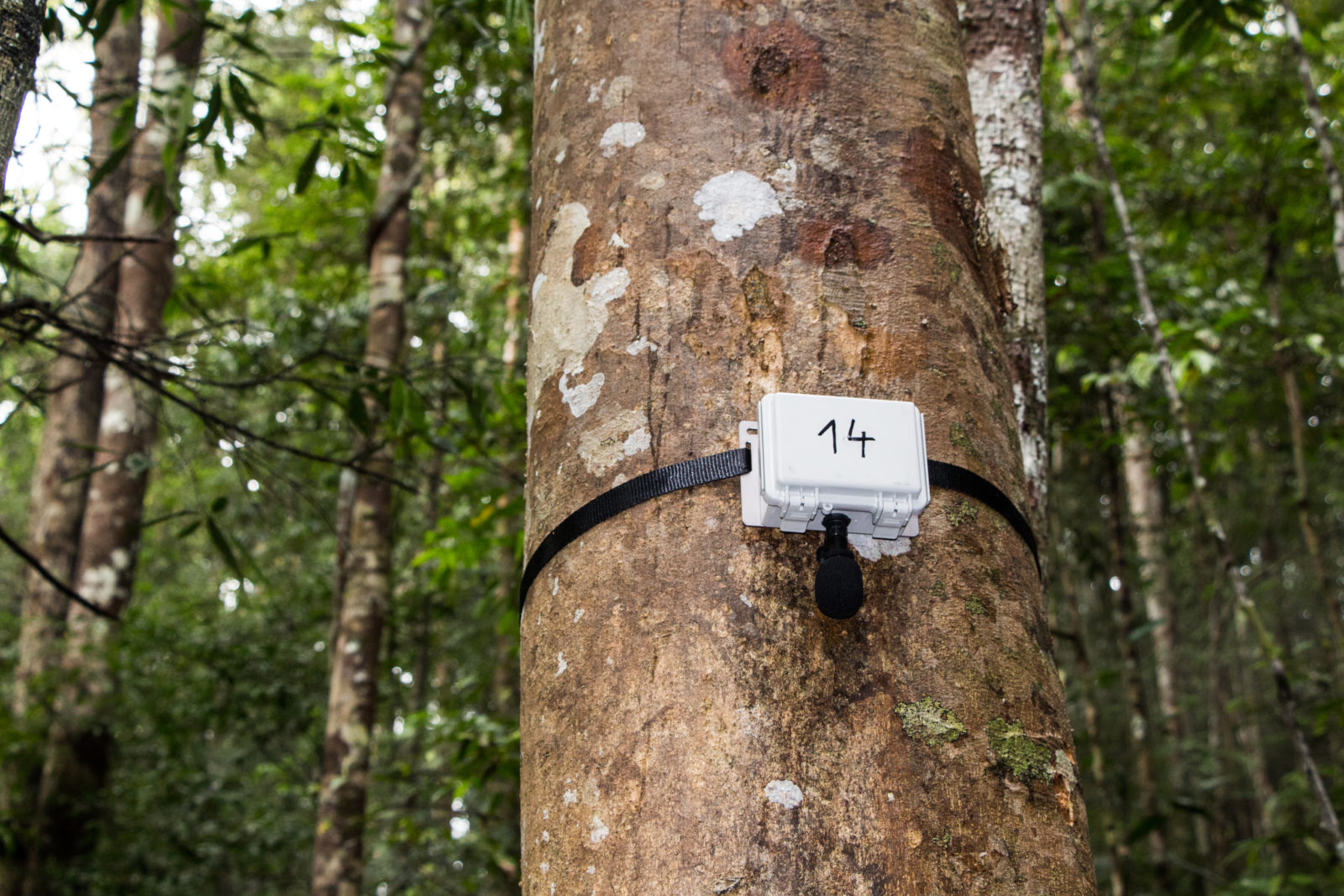
And not just for tropical forest conservation.
“Beyond measuring the effectiveness of conservation projects and monitoring compliance with forest protection commitments,” says Butler, “networked Bioacoustics monitoring systems could generate a wealth of data for the scientific community.”
The proliferation of inexpensive recorders – sound and video – is enabling scientists to find new ways to fill long-standing evidence gaps, and bring new partners into the field of conservation science. “This paper,” notes Game, “is a great example of impact that can only be achieved through collaboration between conservation scientists, computer scientists, and engineers. This is the frontier for applied conservation science.”
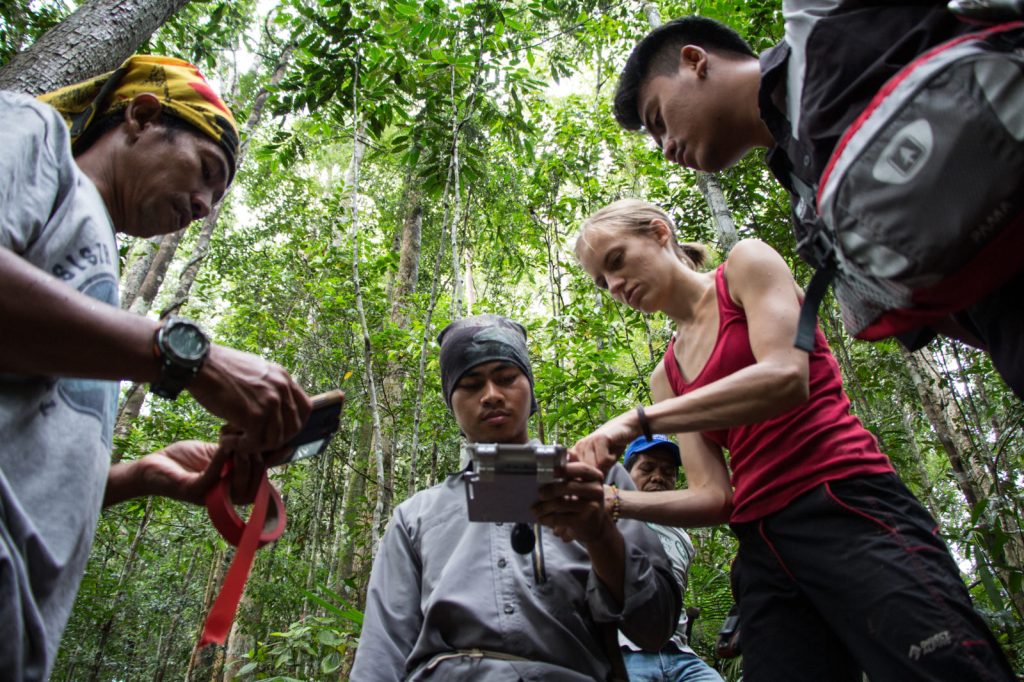



In traveling to remote areas around the globe, staying with and observing local communities I would offer embracing to a greater degrees of on going partnerships with local communities to assist in filling gaps in the absence of information from, as the article points out, from satellite and camera data, to assist in the research process. These communities are a great asset because of their presence.
There are organizations and governments which are moving in this direction and the movement needs to expand and continue.
I personally see these partnerships as a means to improving equity and conservation.
Technology has come a long way since I was involved in doing some acoustic monitoring at TNC’s West Branch Wilderness in North Central Pa (2005 – 2007). Cornell’s bioacoustics lab had developed an acoustic recording device (ARU) that used a 10 meg hard drive for data storage and needed a car battery to provide power!
Eddie is right about the real challenge is analysing all the data collected.
Amazing! I had never read anything about bioacoustics before this article appeared. Thanks!
Great idea, really an eye opener.
What are some of the expense numbers of this method of research? The sound capture seems pretty inexpensive but the time to analyze seems pretty lengthy. So I was curious how that compares to actual biologists in the field.
Definitely an interesting way to use technology to help conservation!